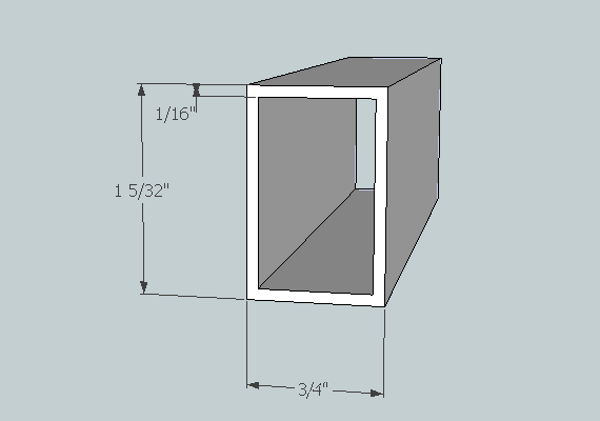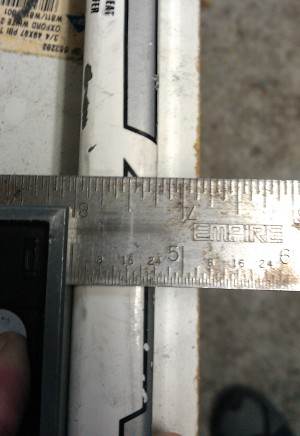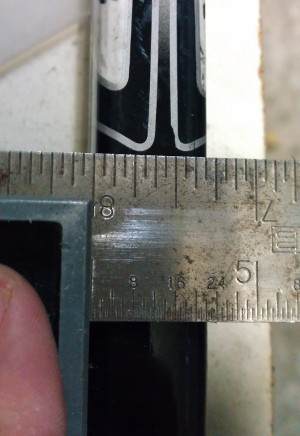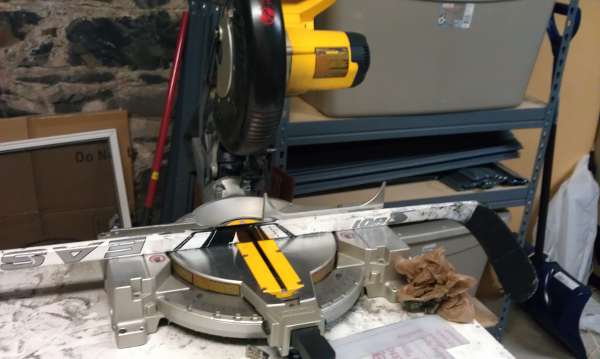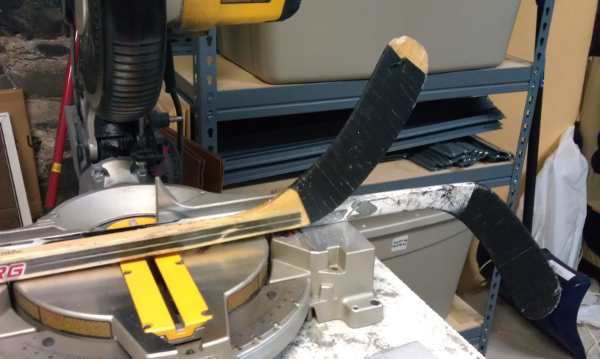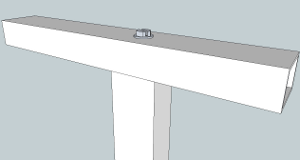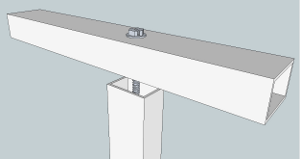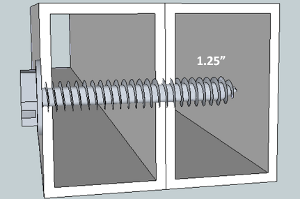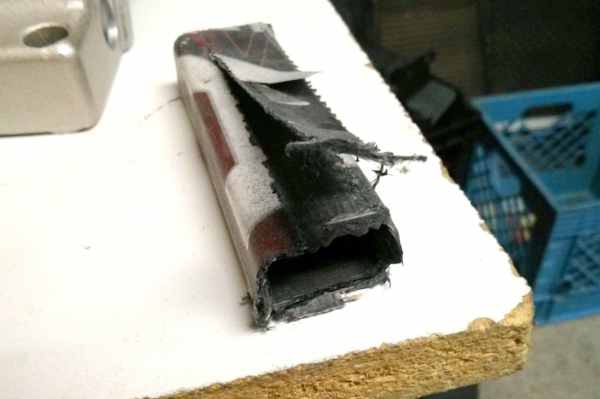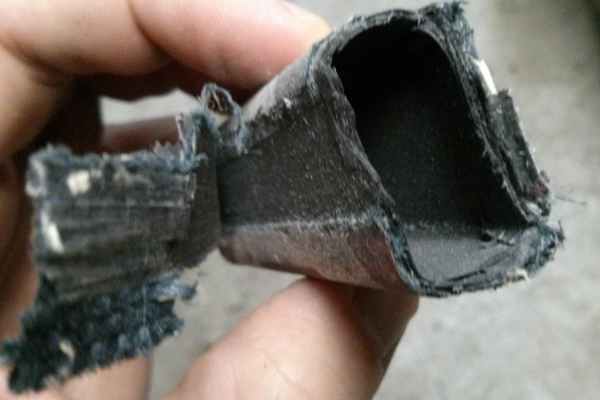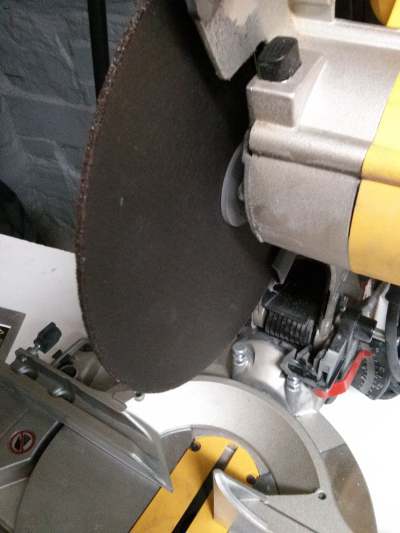Building With Composite Sticks: Additional Tips & Tricks
Although most of my designs on the website show the furniture construction using wooden sticks, you can create all of the designs using composite sticks with some adjustments.
This is meant to supplement the material on Building. If you haven’t read that page, I suggest doing so before moving on. With the exception of the major joints in the chair and certain places on the nightstand and chair where you must screw into the hollow area of a stick, the hardware and machining tips discussed below will enable you to use composite sticks in those pieces of furniture.
Composite hockey sticks, occasionally referred to as graphite or carbon fiber, are just about every hockey stick sold in today’s pro shops used by professionals and amateurs alike. Though stronger, longer lasting, and lighter, composite hockey sticks are much more difficult to use as a building material than the previously ubiquitous fiberglass coated wood sticks.
Some noted challenges of using composite sticks include:
- Machining composites generate a potential health risk
- Reduced quantity of working material compared to wood sticks
- Hollow sticks increase design and construction complexity
- Traditional saw blades to do not easily or cleanly cut composites sticks
- Composite material is significantly stronger than wood increasing drilling difficulty
Solutions to some of these issues and suggestions how to build with composite hockey sticks is discussed below.
Safety: Additional Measures To Take When Using Composites and Potential Health Risks
Extra precautions on top of those mentioned on the Building page should be followed when working with composites. Composite sticks are made with pre-preg graphite which generate significant dust when machined. This dust is respirable and is potentially harmful as discussed by OSHA and other scientific studies. Traditionally, composites are wet machined to prevent dusting and keep the part cool; however, most of us don’t have access to that type of machinery. Use of a typical mitre saw shown on this website is considered dry machining and requires working in a well ventilated area with an appropriate dust mask. (See OSHA Technical Manual Section III: Chapter 1: Section VI.C.5.) If you don’t wear a dust mask, every time you blow your nose, it’ll be black. Fair warning!
Composite Sticks
Evident to any hockey player is that the composite stick is lighter and hollow compared to its wooden counterpart. This is great for weight savings when playing the game, but makes the use of the stick as a building material much more difficult. First, composite sticks come in a very wide variety of aspect ratios making finding matching sticks even more important when framing. The main part of the shaft the stick itself is similar in dimension to the wooden sticks with a wall thickness of about 1/16″ of an inch.
Stick Taper
Second, the sticks utilize a highly tapered design where the shaft cross-sectional area decreases quickly and earlier on the shaft closer to the player’s lower hand. The stick cross-section narrowing higher on the stick means less of the shaft can be easily used to build. The images below show the tapering effect. The left image shows the width of the shaft being 0.75″ in the middle of the stick shaft. In the right image, you can see that the width has already tapered by 1/8″ as we’ve moved toward the shaft but are still quite far from the blade!
What does this mean? It means a lot less working material. Shown below is how high on this particular stick we must cut to ensure a uniformly dimensioned, quality piece of the stick that is not tapered.
This is in stark contrast to where one would need to cut for the same taper removal with a wooden stick shown below. You’re able to cut much lower on a wooden stick for uniform dimension.
Unfortunately, there are few things that can be done to overcome this other than obtaining more sticks or designing your furniture to leverage this tapering effect.
Hollow Sticks
Third, some designs require screwing a screw into the “hollow” top of a stick as shown below. (This occurs on the back of the chair for example.)
One solution people have employed includes gluing particle board inside the shaft to give the screw a place to drill into. I’ve circumvented the issue by designing around the problem or for decorative sticks, simply gluing the pieces together. It seems to have worked fairly well for me up to this point. If you’ve found a great or better way to attach the sticks, please let me know!
Screws
Hex head sheet metal screws are my primary method for attaching composite sticks together. Depending on what it’s for, I recommend using a #4 or #6 size for clocks and standard furniture joints. For major joints on furniture, I would recommend bolting the material together. In general, the sheet metal screws hold the sticks together pretty well; however, care must be taken for any load bearing connection. A #6 sheet metal screw has 20 threads per inch for a 0.05″ pitch and the wall thickness of the stick is 1/16″ (0.0625″). This means about only 1 thread of the screw is actually engaging the material. This is not a particularly strong hold and should be taken into consideration if just straight screwing items together without any additional support from bolts or glue. This is especially true for making a chair or coffee table!
When using sheet metal screws, make sure you drill a pilot hole first unless using self tapping machine screws. See the drilling section below for more advice. The thin wall thickness of the stick prevents the use of a countersink to clean up the design since by the time you’ve finished countersinking, you’ve nearly just made a bigger hole. For this reason I’ve recommend using a hex head screw as shown below and deal with the non-flushness of the screw head. The hex head screw is also much less prone to stripping as compared to a Philips or flathead screw type.
Cutting Sticks
Typical mitre saws come with a 60 tooth or fewer blade meant to make coarse wood cuts. Your pro shop probably uses one to cut your new stick to length, but they’re not concerned with a clean cut like us. In theory, mitre saw blades “cut” by chipping away the material as each tooth digs into and passes through the piece. The lower the tooth count on the blade, the more material must be chipped away per tooth per rotation. Higher tooth count saw blades improve performance (cleaner cuts) since less material is removed per tooth, but still operate by chipping away the composite material. Unfortunately, composite materials do not respond well to the chipping away process. What does this mean?
In short, composites should not be cut with traditional saw blades. You certainly can cut sticks with them, but you’re likely to be left with a very jagged edge or with stick delamination. Delamination is the separation of the carbon fiber layers. An example of delamination is shown below. This is not the type of smooth, clean cut we need to have on our stick to make quality furniture.
Fortunately, composites respond well to an abrasive cutting process which wears away the material into a dust as the tool passes through. Typically used for cutting cinder blocks or other ceramics, a masonry blade abrades away material delivering a clean cut with minimal blow out and is fairly inexpensive. Most high performance tools utilize a diamond-coated surface to cut composites which tend to be very expensive. The masonry blade performs the same job at a much lower cost, even though it will need more frequent replacement since they are not as hard. I highly recommended the use of a masonry blade for cutting all composite sticks as shown in a mitre saw below.
As I mentioned earlier, I’ve seen minimal blow out from cutting composite sticks but still does occasionally happen. It is still wise to place a spare stick at the end of a large cut as shown in Building, but is not entirely necessary.
Drilling Holes
Drilling pilot holes into composites can be very difficult with traditional bits. Similar to cutting, yes, it can be done but will quickly dull them. I’ve experimented with masonry drill bits that come with many drill bit sets but have had mixed results. A diamond-coated or solid carbide drill bit would work best, but they tend to be very expensive. In lieu of those, I’ve successfully used titanium drill bits picked up from my local hardware store and have been quite happy with the results.

